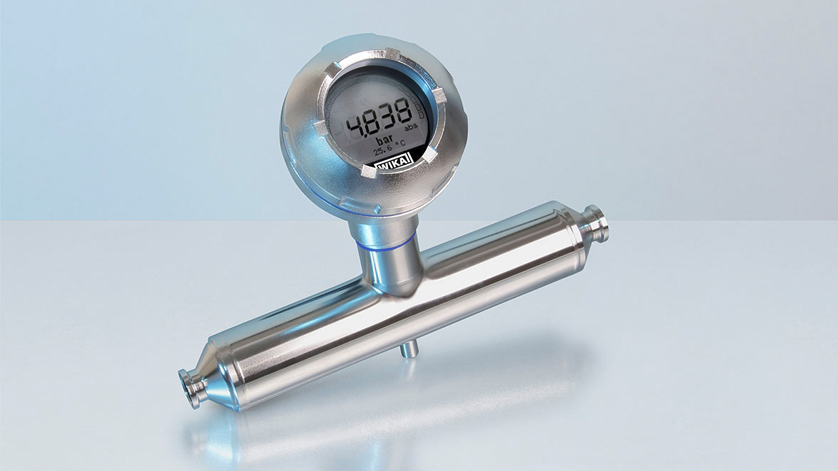
The model DMSU22SA in-line process transmitter from WIKA marks a new chapter for pressure monitoring in sanitary applications. The robust instrument with EHEDG certification and 3-A marking increases process reliability and, at the same time, reduces the consumption of resources such as energy and cleaning agents. The transmitter thus supports pharmaceutical and food manufacturers in their efforts to economise their processes further.
As is common with other in-line solutions in sanitary applications, the DMSU22SA is integrated into the pipeline via hygienic connections. Equipped with the HART®7 communication protocol, it can also be easily integrated into digitalised processes. What distinguishes this in-line process transmitter from previous measuring systems in its area of application?
Elliptically shaped sensor element
The DMSU22SA operates with an elliptically shaped sensor element that deforms under pressure. A Wheatstone measuring bridge attached to the sensor body records the changes in electrical resistance equivalent to the pressure and transmits them to the transmitter. The measurement accuracy of 1 percent of the span is supported by active temperature compensation, between -10 °C and +80 °C, using an integrated Pt sensor. This enables error compensation to be 10 times better than with conventional metallic sensors, and therefore allows for more accurate process control.
In-line process transmitter measures without risk of contamination
Furthermore, users increase process reliability in two ways with the in-line process transmitter. First: In contrast to previous in-line solutions, the DMSU22SA measures without transmission fluid. Therefore, there is no risk of contamination in the event of damage. Second: The sensor element, made of 316L stainless steel, has an extremely robust wall. Depending on the instrument version, it is up to ten times as strong as a conventional diaphragm seal diaphragm (0.05 millimetres), but still offers the elasticity required for measurement accuracy.
Sensor with integrated self-monitoring
Despite the pronounced durability, it cannot be ruled out that persistent, extreme conditions in the process can lead to leaks. In such a case, the medium penetrates into the evacuated space between the sensor element and the support tube. An integrated vacuum monitoring system, which reacts at a pressure of 50 mbar, detects the damage and signals it immediately, either via HART® or via the current loop.
Flow behaviour saves costs and has a lasting effect
Due to its technology, the new in-line process transmitter also helps reduce costs of process operations while making processes more sustainable. The elliptical sensor element features a significantly better flow behaviour in comparison to hygienic housings. This is proven by a resistance measurement. Users, therefore, require less energy for CIP and SIP processes and to maintain process pressure. What’s more, you also use less cleaning agents for “Cleaning in Place”.
Note
For further details on the model DMSU22SA in-line process transmitter, please visit the WIKA website. There you can also find out about other WIKA measurement technology for the “Pharmaceuticals and biotechnology” and “Food and beverages” sectors. If you have any questions, your contact will gladly help you.
Also read our posts
Diaphragm seal system with diaphragm monitoring – also digital
Pharmaceutical industry: Level monitoring using differential pressure
Pressure monitoring in UHT plant without risk of contamination
Diaphragm seal system with IO-Link, for the food industry

